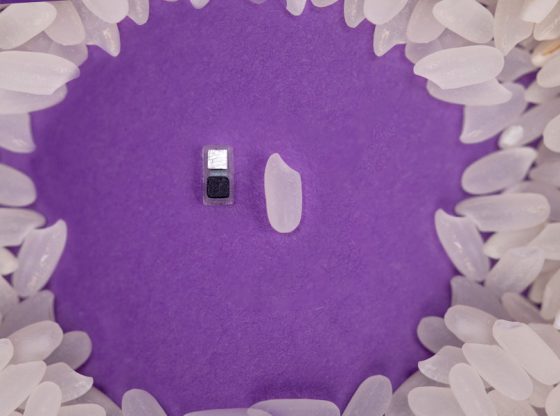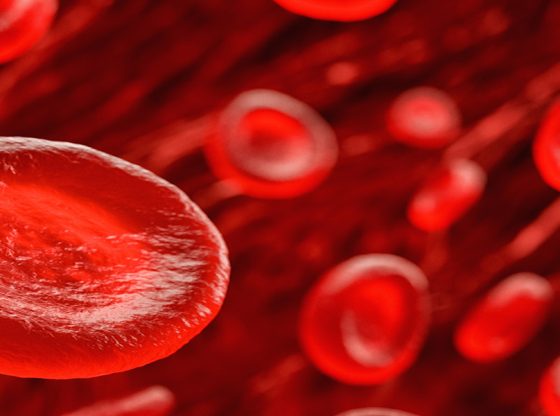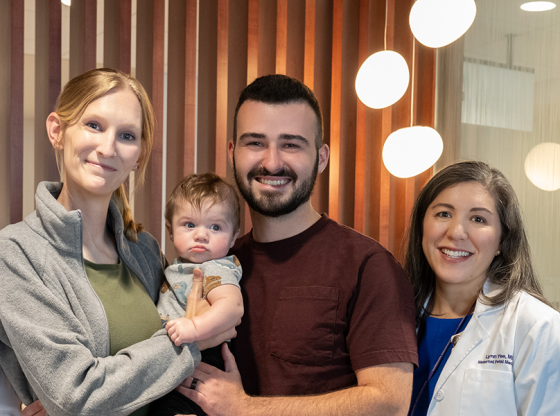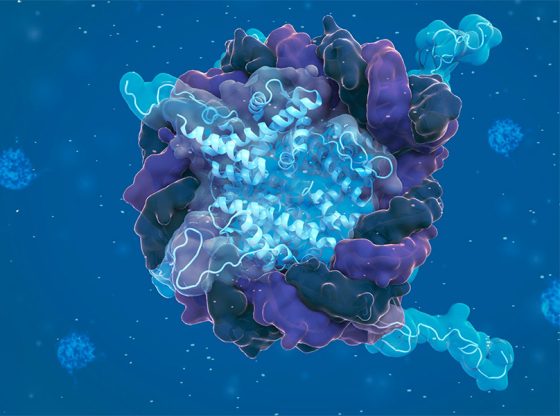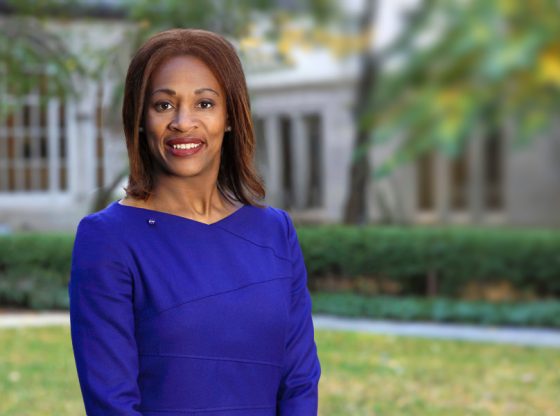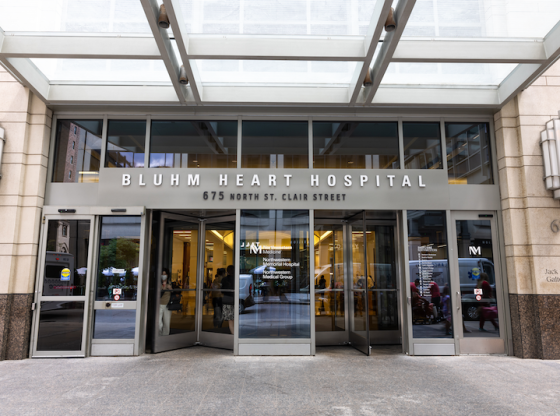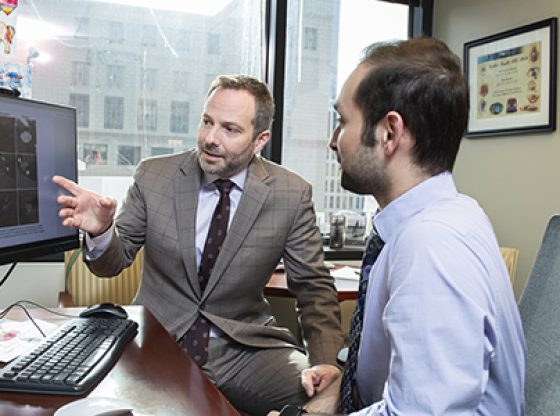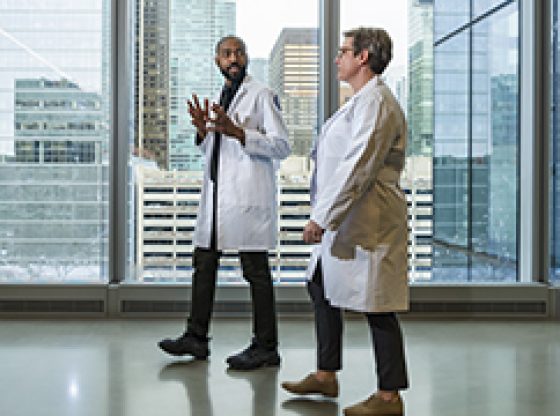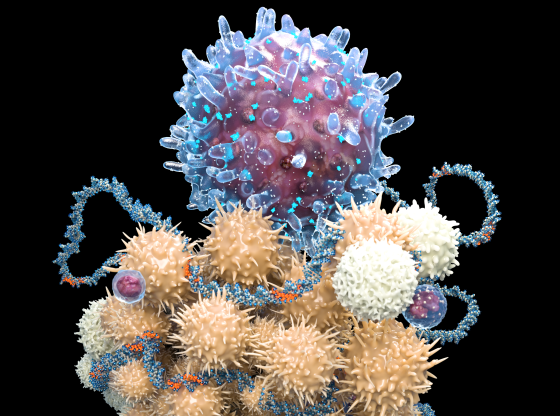Bringing the Fundamentals of Clinical Care Back to the Bedside
As the inaugural director of the Center for Bedside Medicine, Brian Garibaldi, MD, MEHP, seeks to reinvent the doctor-patient encounter for the 21st century.
By Christina Frank
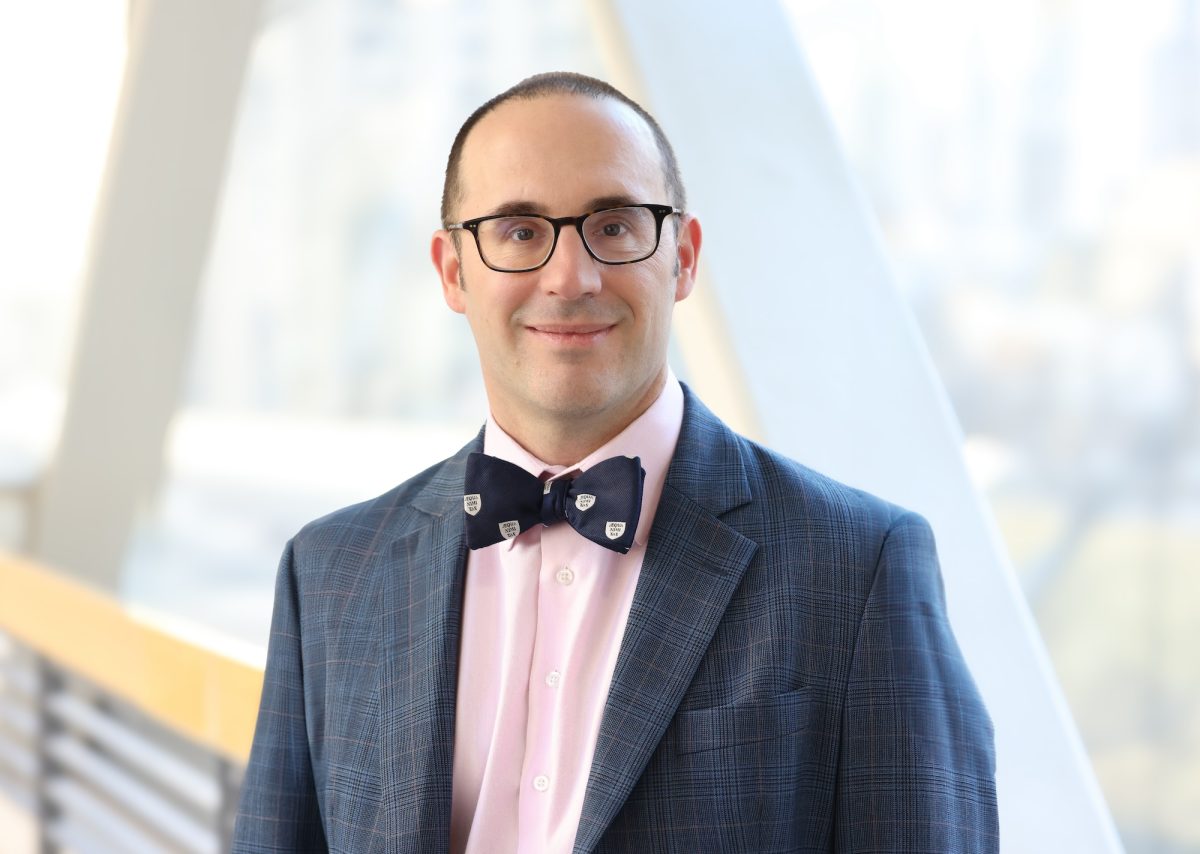
Brian Garibaldi, MD, MEHP, thinks it’s time to get back to basics in patient care. While he fully appreciates how artificial intelligence (AI) and advanced diagnostics have revolutionized medicine, Garibaldi believes that relying too heavily on technology has taken a toll on how patients are treated and the type of care they receive.
“We’ve lost sight of the importance of some traditional skills, like performing a focused physical exam and building a rapport with patients,” said Garibaldi, the Charles Horace Mayo Professor of Medicine in the Division of Pulmonary and Critical Care and the inaugural director of the Center for Bedside Medicine. “There is a false belief that if it’s done through technology, it’s somehow better than what we can see, hear, feel, and, in some cases, smell.”
Research has shown that physicians spend only 13 percent of their time in direct contact with patients in the hospital, amounting to just six minutes per patient per day. Not only is this frustrating for patients, a risk factor for diagnostic error, and detrimental to the doctor-patient relationship, but it contributes to physician burnout.
“Physicians find meaning in their work by interacting with patients and their families,” Garibaldi said. “Most doctors did not go into practice to spend most of their time in front of a computer screen. And as we spend less time in direct contact with patients, there is an increased risk of stress and burnout from all of the administrative tasks that physicians have to do on the computer.”
LESSONS LEARNED
Garibaldi earned his medical degree from the Johns Hopkins University School of Medicine in 2004 and completed his internship, residency, and chief residency in medicine and fellowships in pulmonary and critical care medicine at Hopkins. In 2018, he earned a Master of Education in the Health Professions through the Hopkins School of Education. He directed the Johns Hopkins Special Pathogens Center, a federally funded special pathogens treatment program, and was also the director of the Johns Hopkins Precision Medicine Center of Excellence (PMCOE) for COVID-19, which is dedicated to understanding the pathobiology of COVID-19 and the impact of therapeutics on disease outcomes.
It was during a 2013 trip to Malaysia that Garibaldi had a “lightbulb” moment. The reason for the trip was to teach basic physiology at a medical school in Kuala Lumpur and set up clinical clerkships at the national hospital as part of a collaboration with Johns Hopkins. But it was Garibaldi who came away from the experience with a new understanding of clinical care.
“I was blown away by the bedside clinical skills of the Malaysian physicians,” he said. “The doctors approached the bedside encounter very, very differently than U.S. physicians in that they approached it as a hypothesis-driven process. They asked themselves, ‘What do I think might be going on with this patient, and what can I do both in terms of the questions I ask and the physical exam maneuvers that I perform to inform what I do next and what studies I should order?’”
According to Garibaldi, the Malaysian physicians had access to the same technologies available in the United States — such as CT scans and MRIs — but weren’t as quick to use them.
“If you wanted to get an advanced CT scan of the chest, you had to present the clinical case, including your physical exam and maybe the basic chest radiograph, to the radiologist. Nine times out of 10, you already had the information you needed without getting that additional test.”
Upon returning to the United States, Garibaldi approached his program director and began brainstorming with him about how they could reinvigorate the practice of the bedside exam and the bedside encounter in general. In 2017, while working on his master’s in education, he co-founded and became the first co-president of the Society of Bedside Medicine, an organization devoted to education, innovation, and research on the role of the clinical encounter in 21st-century medicine.
Now a nationally recognized leader in innovative bedside teaching methods, Garibaldi is bringing his expertise to Northwestern.
IMPROVING PHYSICAL EXAMS
Garibaldi said the issue of diagnostic error has been discussed for decades by such prestigious institutions as the Institute of Medicine and the National Academy of Medicine.
About half of the diagnostic errors in the outpatient setting, Garibaldi said, are related to a mistake in the physical exam. And when these errors come to light and there are questions as to where these mistakes were made and why no one noticed a particular finding or made an observation, the most common answer is simply that the physical exam was never performed.
“I think we’ve become so reliant on diagnoses that are made away from the patient — a lab test that comes back in three days or a radiology report that comes in hours later — that we have forgotten the value of what we can do simply by having a conversation, asking some questions, being quiet and attentive and not interrupting when someone answers those questions, and then doing a targeted hypothesis-driven physical exam,” Garibaldi asserted.
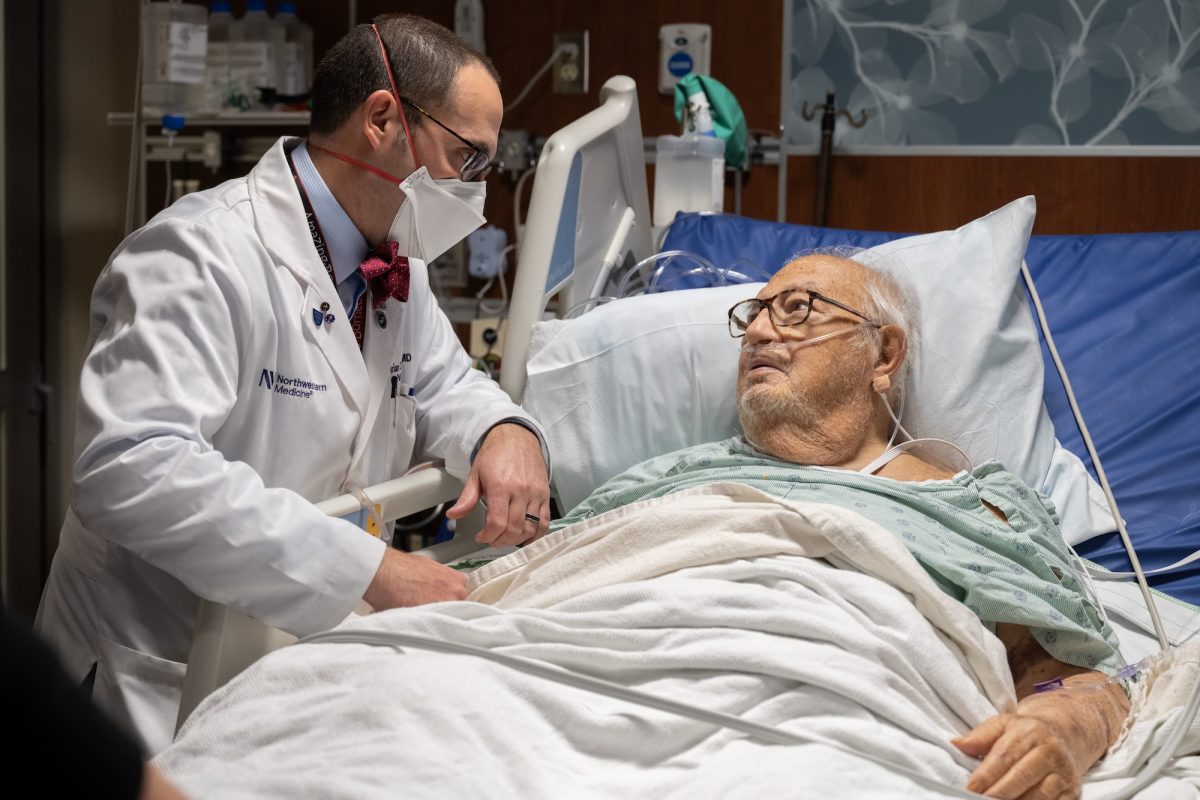
At the heart of the Center for Bedside Medicine’s clinical teaching and assessment arm is a program called Assessment of Physical Examination and Communication Skills, or APECS, which will allow real patients to volunteer to have clinical exams performed by trainees.
“There are physical exam maneuvers that are complex and take years to master, but many of them are very, very simple,” Garibaldi said. “Did you put your hands on the patient’s chest and notice that the left side of the chest isn’t moving, but the right side is? That’s a really powerful finding, and it’s very easy to pick up.”
Another common mistake physicians often make is using a stethoscope through a patient’s gown instead of directly on their skin, which decreases the likelihood of hearing something important. “We have a robust dataset that shows that the people who have better physical exam techniques are significantly more likely to recognize the findings that are there.”
According to Garibaldi, the other arm of the center will focus on research and innovation and explore how to best employ technology to supplement traditional methods.
“We have faculty in the center who are thinking about the role of AI and how it can help us to be better teachers at the bedside,” he said. “We have folks who are working on diagnostic error and trying to understand how we can use data in the electronic health record to understand clinical behavior and opportunities to reduce diagnostic error. Then, how can we tie all of that into direct observation of clinical skills, longitudinal surveys of stress and burnout, patient satisfaction, and patient outcomes.”
The center also has faculty who are interested in teaching point-of-care ultrasound (POCUS) as part of the modern physical exam. “POCUS is an incredibly powerful tool at the bedside. It allows clinicians to calibrate their physical exam skills with real-time visualization of pathophysiology and make diagnoses that might elude traditional physical exam techniques. But perhaps most importantly, POCUS brings physicians, patients, and learners together at the bedside where they can engage in meaningful bedside interactions.”
Garibaldi noted that there has been real enthusiasm among students, resident physicians, faculty, and patients about the center thus far.
“I feel so fortunate to be at a place like Northwestern where the community is so talented and so enthusiastic about these issues,” Garibaldi said. “I’m not aware of any other place that’s putting this level of support into the type of center that we’re building here. We’ve already created some incredible collaborations with folks across this institution that I’m really happy about. This is a whole community of people who have been thinking about these issues for a long time, and this center is a way to coalesce all these people so that good ideas and good initiatives come to fruition.”
Learn more about Brian Garibaldi, MD, and how Northwestern Medicine is working to reimagine the art and science of bedside care.

